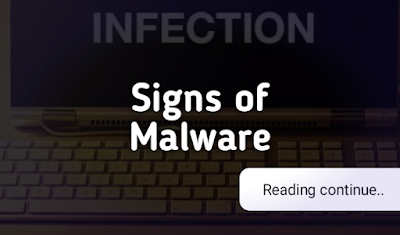WordPress is a widely popular content management system (CMS) used by millions of website owners worldwide. However, with its popularity comes the risk of malware infections. Malware can cause significant damage to your website, compromising its security, performance, and reputation. In this article, we will delve into the world of WordPress malware, understand its importance, explore methods of prevention, and discuss free options for removing malware from your WordPress site.
Free WordPress Malware Removal
Malware refers to malicious software that is designed to exploit vulnerabilities in computer systems, including websites running on CMS platforms like WordPress. Hackers and cybercriminals can inject malware into your WordPress site through various means, such as vulnerable plugins, themes, or weak login credentials. Once infected, your website may experience issues like unauthorized redirects, defacement, data theft, or serving malware to your visitors.
The Importance of Malware Removal
Failing to remove malware from your WordPress site can have severe consequences. It not only affects your website's functionality and user experience but also harms your online reputation. Search engines like Google can flag infected websites as unsafe, leading to a significant drop in organic traffic. Additionally, your visitors' personal information may be compromised, causing trust issues and potential legal consequences.
Signs of Malware Infection
Detecting a malware infection on your WordPress site is crucial for timely action. Here are some common signs that indicate a possible malware presence:
1. Unusual website behavior: If your website behaves erratically, such as redirecting to unrelated sites, displaying unwanted pop-ups, or showing unusual error messages, it might be infected.
2. Slow loading times: Malware can slow down your website by consuming server resources or injecting additional code, resulting in sluggish performance.
3. Suspicious file modifications: Check for any unauthorized changes in your website's files or unexpected new files added to your server.
4. Blacklisting by search engines: If your site has been flagged as unsafe by search engines, it could be due to malware.
Common Types of WordPress Malware
Understanding the different types of malware can help you identify and combat infections effectively. Here are some common types of WordPress malware:
1. Backdoors: These allow hackers to gain unauthorized access to your website even after initial removal. They create hidden entry points for future attacks.
2. Pharma hacks: This type of malware adds spammy pharmaceutical content to your website, often linked to illegal online pharmacies.
3. Drive-by downloads: Hackers inject malicious code into your website, automatically downloading malware onto visitors' devices without their knowledge.
4. Malicious redirects: These redirect visitors to other harmful websites, potentially leading to further malware infections or phishing attempts.
Preventing Malware Infections
Prevention is key when it comes to WordPress malware. By implementing the following measures, you can significantly reduce the risk of infections:
1. Keep WordPress and plugins updated: Regularly update your WordPress core, themes, and plugins to patch vulnerabilities and ensure compatibility with the latest security standards.
2. Use strong login credentials: Create strong, unique passwords for your WordPress admin account and discourage using common usernames like "admin."
3. Be cautious with plugin and theme sources: Only download plugins and themes from reputable sources like the official WordPress repository or trusted developers.
4. Install a WordPress security plugin: Consider using security plugins that offer features like malware scanning, firewall protection, and brute force attack prevention.
Free WordPress Malware Removal
If your WordPress site has been infected with malware, it's crucial to take immediate action to remove it. While professional malware removal services are available, you can also opt for free options to tackle the issue:
Manual Malware Removal Process
The manual removal process involves identifying and removing infected files and code snippets manually. It requires technical expertise and a deep understanding of the WordPress file structure. However, it can be time-consuming and complex for beginners.
Using WordPress Security Plugins
Several security plugins offer free malware removal features alongside their core security functionalities. These plugins can scan your website for malware, remove infected files, and provide ongoing protection. Some popular options include Wordfence, Sucuri, and MalCare.
Hiring Professional Malware Removal Services
If you lack technical skills or prefer a hands-off approach, hiring professional malware removal services is a viable option. Many companies specialize in WordPress security and can efficiently clean your website from malware, ensuring it's restored to its original state.
Best Practices for Website Security
Apart from malware removal, adopting best practices for website security is essential to prevent future infections. Consider implementing the following measures:
1. Regular backups: Create regular backups of your website to have a restore point in case of emergencies.
2. Secure hosting: Choose a reputable hosting provider that offers robust security measures and regular malware scanning.
3. Use SSL certificates: Encrypting data transmission between your website and visitors can enhance security and build trust.
4. Enable a web application firewall (WAF): WAFs can help filter out malicious traffic and protect your website from various types of attacks.
Recovering from a Malware Attack
Recovering from a malware attack involves not only removing the infection but also restoring your website's functionality and reputation. After removing the malware, closely monitor your website for any remaining issues, and consider notifying search engines about the cleanup.
Monitoring and Regular Maintenance
Maintaining a secure WordPress site is an ongoing process. Regularly monitor your website for any signs of vulnerabilities or malware. Stay updated with the latest security practices, plugin updates, and security alerts to mitigate risks effectively.
Keeping your WordPress site free from malware is essential for its security and reputation. By understanding the nature of malware, implementing preventive measures, and promptly removing infections, you can ensure a safe online experience for both yourself and your visitors. Remember to prioritize regular backups, use reputable security plugins, and consider professional assistance when needed. By following these best practices, you can minimize the risk of malware infections and safeguard your WordPress website effectively.



